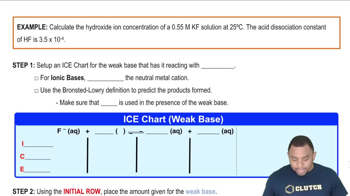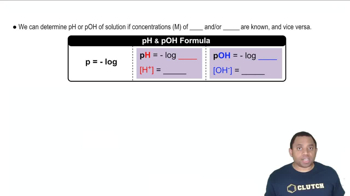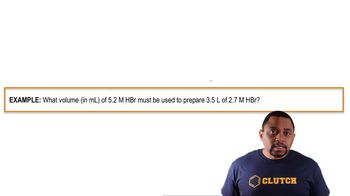Here are the essential concepts you must grasp in order to answer the question correctly.
Strong Bases and Hydroxide Ion Concentration
Strong bases, such as Sr(OH)₂, LiOH, NaOH, and KOH, completely dissociate in water to produce hydroxide ions (OH⁻). The concentration of OH⁻ can be calculated directly from the molarity of the base, taking into account the stoichiometry of the dissociation reaction. For example, Sr(OH)₂ produces two OH⁻ ions per formula unit, which must be factored into the concentration calculation.
Recommended video:
Hydroxide Ion Concentration Example
pH and pOH Relationship
The pH and pOH of a solution are related through the equation pH + pOH = 14 at 25°C. pH measures the acidity of a solution, while pOH measures its basicity. To find the pH from the hydroxide ion concentration, first calculate the pOH using pOH = -log[OH⁻], and then use the relationship to find pH. This is essential for understanding the overall acidity or basicity of the solution.
Recommended video:
Dilution and Concentration Calculations
When diluting a solution, the concentration and volume are related by the equation C₁V₁ = C₂V₂, where C is concentration and V is volume. This principle is crucial for calculating the new concentration of a solution after dilution, such as when 1.00 mL of NaOH is diluted to 2.00 L. Understanding this concept allows for accurate determination of the resulting hydroxide ion concentration and subsequent pH.
Recommended video:
Dilution Calculation Example
 Verified step by step guidance
Verified step by step guidance

